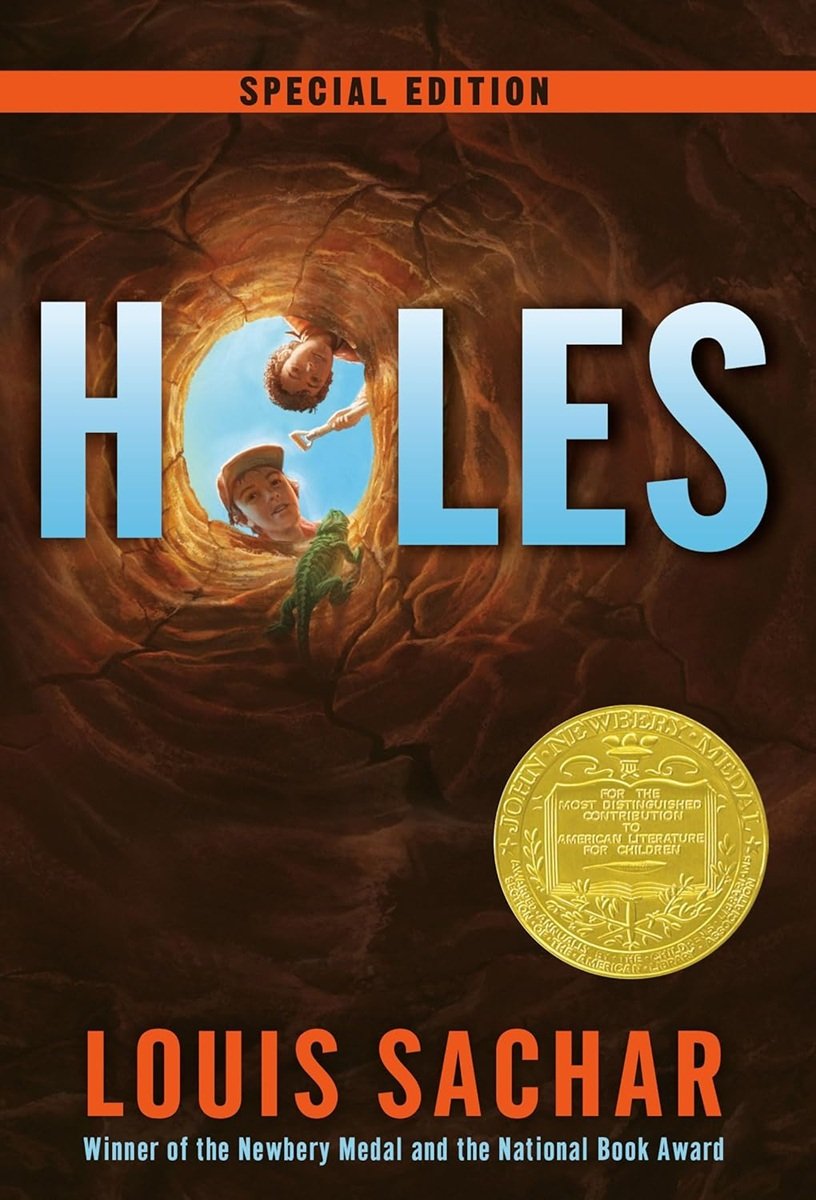Your cart is currently empty!
Louis Sachar’s Holes is a modern classic that blends adventure, mystery, and dark humor into a powerful story about fate, justice, and friendship. Set in a Texas juvenile detention camp where boys dig endless holes under the scorching sun, the novel weaves together past and present in a tale that is both gripping and deeply meaningful. On this page, readers will find a comprehensive literature guide to Holes, including chapter summaries, character analysis, key themes, and discussion questions. Perfect for students, teachers, or anyone revisiting the novel, this guide offers clear insights to enrich an understanding of Sachar’s work.

| Title | Holes |
| Author | Louis Sachar |
| Year Published | 1998 |
| Suitable Grade Level (US) | Grades 5-8 (Ages 10-13). Commonly taught in middle school English classes for its engaging story and accessible language. |
| Key Themes | – Friendship and loyalty (e.g., bond between Stanley and Zero) – Fate vs. free will (family curse and breaking it) – Justice and injustice (juvenile detention system, wrongful convictions) – Redemption and perseverance (overcoming hardships) – Racism and prejudice (historical and modern contexts) – Family legacy and intergenerational trauma |
| Literary Elements | – Plot: Nonlinear structure with interwoven past and present stories; adventure/mystery with a quest-like narrative. – Characters: Protagonist Stanley Yelnats (develops resilience); Zero (Hector Zeroni, enigmatic and loyal); antagonists like the Warden (power-hungry). – Setting: Camp Green Lake, a barren desert juvenile camp (symbolizes isolation and punishment). – Point of View: Third-person limited, focusing on Stanley. – Symbolism: Holes (literal and metaphorical voids in life); yellow-spotted lizards (danger and fate); onions (healing and survival). – Tone/Mood: Humorous yet dark, blending adventure with serious undertones. |
| Rhetorical Devices | – Foreshadowing: Hints at family history and curse resolution. – Flashbacks: Interspersed historical narratives explaining the curse. – Irony: Situational (e.g., digging holes builds “character” but is pointless punishment); dramatic (readers know curse details before characters). – Repetition: Motifs like the family palindrome “Yelnats” and recurring bad luck. – Humor/Satire: Exaggerated camp rules and characters to critique authority. |
| Curriculum Connections | – Language Arts/English: Reading comprehension, character analysis, theme exploration, creative writing (e.g., alternate endings). – Social Studies/History: Juvenile justice system, Texas history, immigration/racism (links to Kissin’ Kate Barlow’s story). – Science: Desert ecology, survival skills (e.g., water conservation). – Cross-Curricular: Discussions on bullying, empathy; projects like mapping the plot or debating justice themes. Aligns with Common Core standards for narrative elements and inferential reading. |

